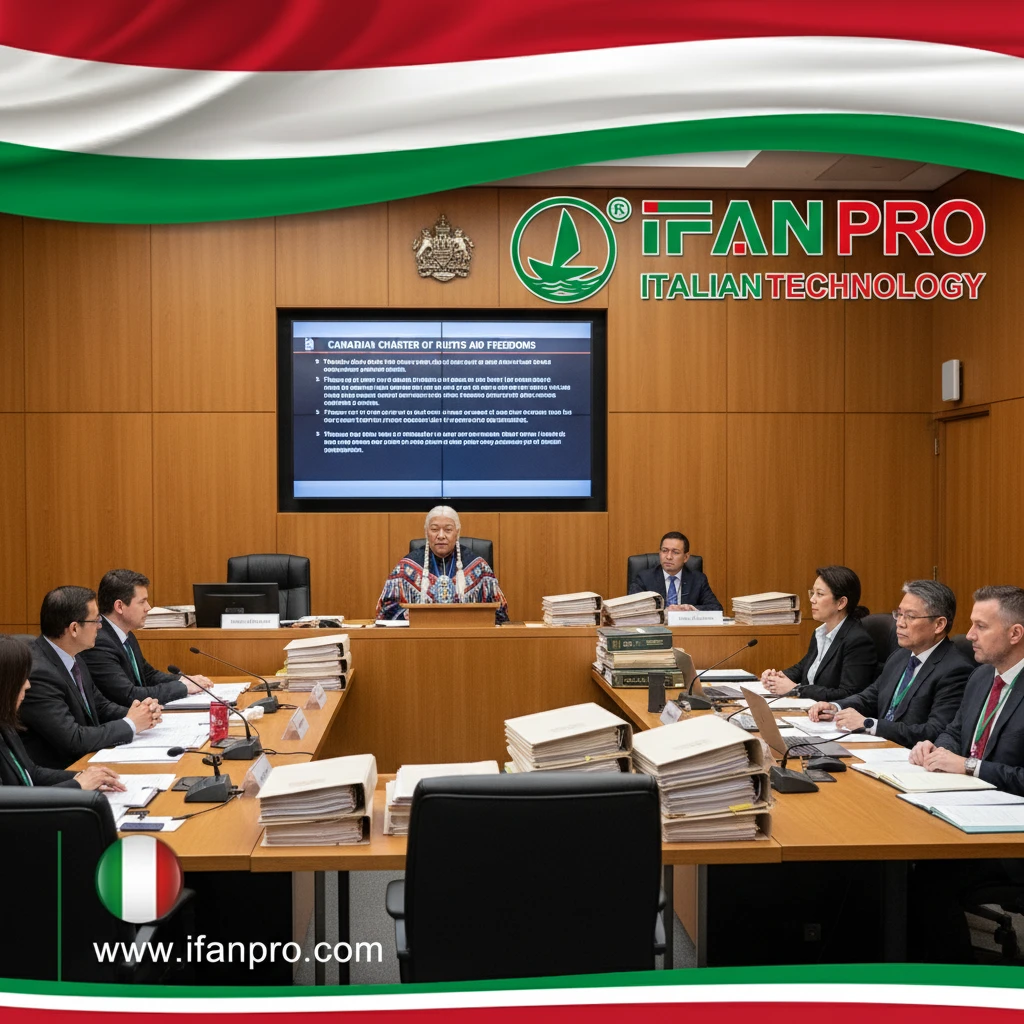I’ve watched pipeline projects rise and fall for years, but Carney’s new plan creates deeper divisions than ever. The starkly different reactions from provincial leaders reveal a fundamental challenge in uniting Canada’s economic interests.
Prime Minister Mark Carney’s pipeline plan aims to create one Canadian economy and diversify trade, but it faces significant provincial disagreements. British Columbia objects to being excluded from talks and has environmental concerns, Alberta seeks economic growth and market access, while First Nations groups demand meaningful consultation and jurisdiction recognition. The plan’s success depends on balancing these competing interests through the new Major Projects Office and “one project, one review” approach.
The outcome will determine whether Canada can overcome its long-standing internal barriers to major project development.
What Are the Key Provincial Disagreements on Carney’s Pipeline Plan?

The key disagreements center on British Columbia’s exclusion from initial talks, environmental protection conflicts, and First Nations consultation. Premier David Eby called his province’s exclusion “unacceptable” and questioned why British Columbia was treated differently than Quebec or other provinces would be. Additionally, coastal First Nations demand meaningful participation, while New Brunswick’s “one project, one review” approach faces Indigenous criticism for inadequate consultation and environmental standards.
The heart of the conflict lies in competing visions of provincial rights and environmental protection. British Columbia’s Premier David Eby expressed strong objection to being excluded from initial discussions between Alberta, Saskatchewan, and the federal government about a potential pipeline to B.C.’s northern coast. He pointedly stated, “This is not something that would happen to Quebec. This is not something that would happen to other provinces in the federation”.
The environmental standards conflict is equally challenging. In New Brunswick, First Nations groups are strongly opposing the draft “one project, one review” proposal, suggesting the province has weaker environmental protection laws than the federal government. The Mi’gmawe’l Tplu’taqnn Inc., representing eight Mi’kmaq First Nations, specifically noted that “both the legislation and regulations are out of date, and do not provide for proper inclusion of Indigenous peoples in the process”.
Provincial Positions on Carney’s Pipeline Plan
| Province | Key Concerns | Primary Demands |
|---|---|---|
| British Columbia | Exclusion from talks; environmental risks to coast; threat to existing projects | Participation in discussions; respect for coastal First Nations; funding cap or equivalent project |
| Alberta | Need market access for oil; regulatory barriers | Pipeline approval; tanker ban exemption; regulatory streamlining |
| New Brunswick | Project approval delays; economic development needs | Streamlined environmental assessments; “one project, one review” system |
| First Nations | Inadequate consultation; environmental protection; jurisdiction recognition | Meaningful consultation; right to say no; respect for Indigenous laws and governance |
The constitutional dimension adds further complexity. First Nations groups emphasize that consultation isn’t merely procedural but requires substantive compromise and change based on their concerns. As the Saskatchewan File Hills Qu’Appelle Tribal Council noted in their submission, the current approach “refers to First Nation peoples as ‘partners’ or ‘participants,’ but fails to recognize and provide for First Nation jurisdiction and decision-making authority over project assessments on their lands and territories”.
From our experience at IFAN working with international clients, these multi-layered disagreements require addressing each party’s core concerns directly. Successful projects typically involve early and continuous engagement with all affected parties, rather than attempting to resolve conflicts after positions have hardened.
How Does Carney’s Pipeline Plan Address Environmental Concerns Across Provinces?
Carney’s plan attempts to address environmental concerns through the “critical conservation corridor” concept that concentrates infrastructure to minimize land disturbance, incorporates environmental standards in project approvals, and includes carbon pricing commitments. However, Indigenous groups and environmental advocates remain concerned about adequate protection, with the Northwest Critical Conservation Corridor aiming to streamline development while including conservation areas, though specific protections remain unclear.
The environmental approach centers on the “corridor” concept that has intrigued Canadian policymakers for decades. According to the Montreal Economic Institute study cited by the government, “By concentrating transportation on the same parcel of land, the overall planning, development, and organization of projects can be streamlined, while land-use disturbance can be minimized”. The Northwest Critical Conservation Corridor in British Columbia supposedly includes a “conservation area the size of Greece”, though specific details about what “conservation” entails remain unclear.
The federal government also ties pipeline approvals to environmental commitments. The reported deal with Alberta would make carve-outs from the tanker ban “contingent on commitments to stricter carbon pricing and a ‘multi-billion-dollar investment’ in carbon capture from a group of oil sands companies called the Pathways Alliance”. This represents Carney’s attempt to balance economic development with climate goals.
Environmental Protection Mechanisms in Carney’s Plan
| Mechanism | Proposed Function | Current Status |
|---|---|---|
| Critical Conservation Corridors | Concentrate infrastructure to minimize land disturbance; include conservation areas | Northwest corridor proposed; specific protections undefined |
| Carbon Pricing Linkage | Tie pipeline approvals to stricter carbon pricing and carbon capture investment | Part of proposed Alberta-Ottawa deal |
| “One Project, One Review” | Streamline assessments while maintaining standards | Facing Indigenous criticism for inadequate standards |
| Project-Specific Mitigation | Address environmental concerns case-by-case | Varies by project; e.g., Ksi Lisims LNG designed to run on electricity |
However, significant implementation challenges remain. Heather Exner-Pirot, an energy expert and senior fellow at the Macdonald-Laurier Institute, noted that corridor strategies “are often better in theory than in practice” because “project developers’ plans tend to differ widely, and wouldn’t all fit within the confines of a specific corridor; nor would they change the nature of Indigenous legal claims”. This suggests the environmental benefits might not materialize as comprehensively as planned.
The electricity versus natural gas power source debate for the Ksi Lisims LNG project illustrates the practical environmental tradeoffs. The project is currently designed to run on electricity from BC Hydro’s North Coast Transmission Line, though the consortium would have to temporarily use natural gas generators if electricity isn’t available. Such transitions from higher to lower-emission power sources often face practical hurdles that can undermine environmental benefits.
Based on IFAN’s experience with international environmental standards, truly effective environmental frameworks require clear, specific, and enforceable standards rather than conceptual approaches. The current corridor concept appears strong on vision but weak on detailed environmental protections, creating uncertainty about its practical efficacy.
What Economic Benefits Does Carney’s Pipeline Plan Offer to Different Provinces?

Carney’s pipeline plan offers different economic benefits across provinces: Alberta gains market access and economic growth, British Columbia seeks compensation for risks, and all provinces potentially benefit from supply chain opportunities and market diversification. The federal government estimates removing interprovincial trade barriers could expand Canada’s economy by 4-8% over the long-term, equivalent to $3,000 to $5,000 more for every Canadian.
For Alberta, the economic imperative is clear. A new pipeline would provide crucial market access for the province’s oil, currently heavily dependent on the U.S. market. As one report noted, “A new oil pipeline is totemic for some Albertans who say the federal government holds back their province’s economic potential”. The economic benefit comes from both construction activity and long-term enhanced resource revenue from accessing Asian markets.
British Columbia’s economic calculation is more complex. Premier Eby argued that if federal taxpayer money supports an Alberta pipeline, then “British Columbia should get access to a $50-billion, federally funded project as well”. He also expressed concern that a pipeline could “threaten thousands of jobs and billions of dollars in ‘real projects’ that depend on a ‘fragile consensus’ with First Nations”, suggesting potential economic costs that offset any benefits.
Provincial Economic Benefits and Conditions
| Province | Potential Economic Benefits | Conditions and Concerns |
|---|---|---|
| Alberta | Market diversification beyond U.S.; increased oil prices; long-term resource revenue | Needs regulatory approvals; tanker ban exemption |
| British Columbia | Potential equivalent federal project investment; supply chain opportunities | Risks to existing projects and First Nations consensus; environmental concerns |
| New Brunswick | Faster project approvals; economic development; job creation | Maintaining environmental standards; adequate Indigenous consultation |
| Indigenous Communities | Economic partnerships; employment opportunities; impact benefit agreements | Meaningful participation; environmental protection; respect for jurisdiction |
The broader national economic argument centers on diversification and internal trade. Carney has emphasized that removing barriers to internal trade would “lower prices for consumers by reducing trade costs by up to 15% and expand our economy by up to $200 billion or 4-8% over the long-term”. The pipeline plan represents part of this broader economic vision of creating “one Canadian economy instead of 13”.
The infrastructure development surrounding pipelines also generates significant economic activity. The Northwest Critical Conservation Corridor includes BC Hydro’s $6-billion North Coast Transmission Line, which would “deliver electricity to various mines, export facilities and other industrial projects in the province’s north”. This enables additional economic development beyond the pipeline itself, creating a multiplier effect across multiple sectors.
From IFAN’s perspective in the plumbing supply industry, we see consistent patterns across infrastructure projects: those with balanced economic benefits and fair risk distribution among stakeholders achieve more sustainable success. The current pipeline proposal appears heavily weighted toward Alberta’s interests, with insufficient balanced economic benefits for British Columbia and Indigenous communities.
Can Carney’s Pipeline Plan Overcome Constitutional Challenges Between Provinces?

Carney’s pipeline plan faces significant constitutional challenges including jurisdiction over environmental assessment, the federal duty to consult Indigenous peoples, and provincial authority over resources and lands. First Nations groups emphasize that consultation is a constitutional requirement, not merely a policy choice, and New Brunswick’s attempt to implement “one project, one review” already faces backlash for inadequate Indigenous inclusion and recognition of jurisdiction.
The constitutional framework creates multiple potential veto points. In Canada, “consultation with Indigenous peoples is a constitutional requirement, and courts have recognized this”. The proposed streamlining of environmental assessments potentially conflicts with this requirement, particularly when provinces like New Brunswick haven’t adopted the United Nations Declaration on the Rights of Indigenous Peoples (UNDRIP), unlike the federal government.
The division of powers between federal and provincial jurisdictions presents another challenge. The draft cooperation agreement between New Brunswick and the federal government states that “when a proposed project is primarily a provincial undertaking, Canada is committed to relying on New Brunswick’s applicable environmental assessment and regulatory processes for the assessment of the adverse effects within federal jurisdiction”. This attempted delegation of federal responsibilities to provinces raises constitutional questions about maintaining federal standards.
Constitutional Challenge Areas and Potential Resolutions
| Challenge Area | Specific Issues | Potential Resolution Approaches |
|---|---|---|
| Indigenous Consultation | Constitutional duty to consult; UNDRIP implementation; right to say no | Early and meaningful consultation; recognition of Indigenous jurisdiction; impact benefit agreements |
| Federal-Provincial Jurisdiction | Environmental assessment authority; “one project, one review” delegation; maintaining standards | Clear authority delineation; substitution agreements with federal oversight; maintained federal standards |
| Interprovincial Trade | Barrier elimination; project approval authority; economic development balance | First Ministers’ agreements; reciprocal recognition; national interest project designation |
| Environmental Protection | Federal lands protection; fish/migratory bird habitat; transboundary impacts | Corridor approaches; federal conditions on approvals; cooperative federalism |
First Nations groups are explicitly rejecting approaches that treat them as “an afterthought”. The Mi’gmawe’l Tplu’taqnn Inc. stated they “cannot condone or consent to an approach to impact assessment that is premised on the idea that the Crown should ultimately take the lead on decisions involving environmental and other impacts in our territory”. This represents a fundamental constitutional challenge to the government’s current approach.
History suggests these constitutional challenges will likely end up in court. As reported in coverage of the opposition to fast-tracking bills, “Aboriginal groups threatened protests and legal action” and “some groups vowed to wage court battles”. Abram Benedict, Regional Chief of the Assembly of First Nations in Ontario, predicted that “the legislation itself and the constitutionality of it will be challenged”.
Based on IFAN’s experience with international trade and regulatory compliance, constitutional frameworks often require balancing competing rights and responsibilities. The most successful approaches typically involve genuine power-sharing arrangements rather than attempts to streamline processes by minimizing certain parties’ roles. The current pipeline plan appears to face significant constitutional hurdles unless it more meaningfully incorporates Indigenous jurisdiction and addresses interprovincial equity concerns.
Conclusion
Carney’s pipeline plan represents a ambitious attempt to bridge provincial disagreements through economic corridors and streamlined processes, but significant challenges remain regarding environmental protection, Indigenous consultation, and equitable benefit sharing. For reliable pipeline infrastructure components and supply chain management services, consider IFAN‘s certified piping solutions for your next project.














Recent Comments